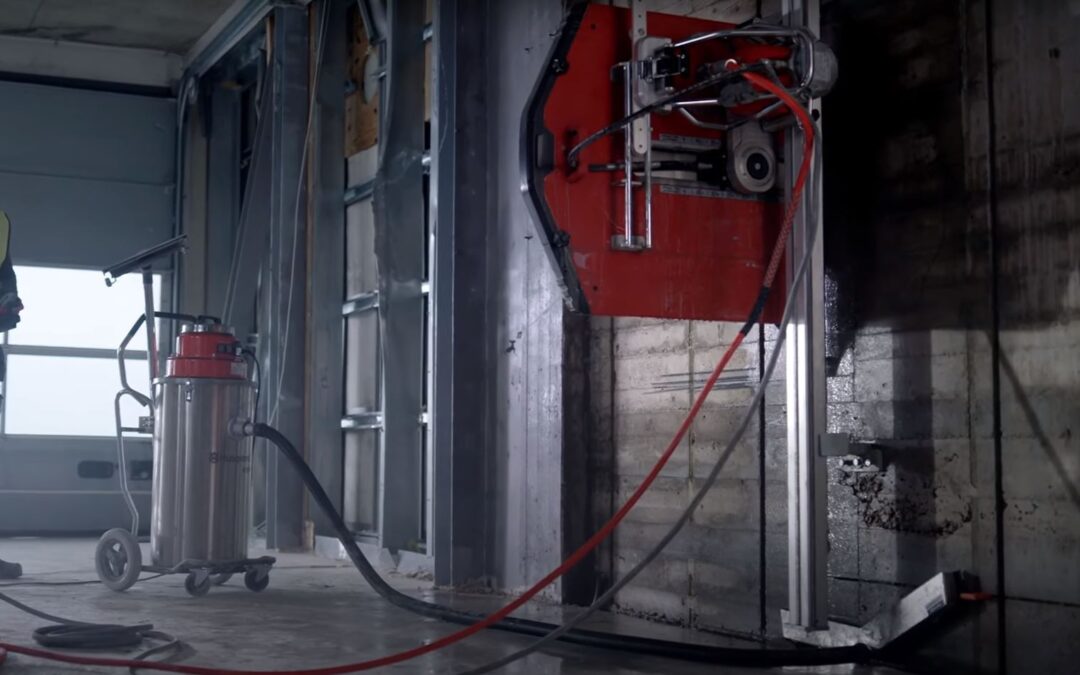The Implications of Wall Cutting on Structural Integrity
Understanding the Structure of Walls
At the core of every building, especially in bustling Melbourne, walls play an indispensable role in holding up the structure. Made of various materials, from bricks to concrete, the composition and reinforcement inside walls provide strength, allowing buildings to withstand different loads and external pressures.
The Science Behind Wall Integrity
Every wall is engineered to distribute weight and force. It’s not just a barrier or partition; it serves as a crucial structural component. Vertical loads from the building’s weight, horizontal loads from wind, and dynamic loads from occupants or machinery are all shouldered by these walls.
How Cutting Impacts Walls
- Load Redistribution: Cutting into a wall redistributes the loads it’s designed to handle. This can cause undue pressure on unprepared parts of the wall, leading to potential weaknesses or failures.
- Reinforcement Damage: Many walls, especially concrete ones, have reinforcement bars (rebars). Cutting can compromise these rebars, reducing the wall’s capacity to bear loads.
- Thermal and Moisture Protection: Walls insulate interiors from external weather. Cutting can expose the inner layers, risking moisture ingress or thermal inefficiencies.
- Acoustic Disruption: In our lively Melbourne neighbourhoods, walls offer sound insulation. An unintended cut might decrease this acoustical protection.
Health and Safety Considerations
- Dust and Debris: Cutting generates dust, which can be harmful if inhaled. Proper protection and ventilation are crucial.
- Physical Hazards: Using equipment without proper training or safety gear can lead to injuries.
- Hidden Utilities: Walls often hide utilities like electrical wiring or plumbing. Cutting without prior investigation risks damaging these and poses electrocution or flooding threats.
Exceptions and Special Circumstances
While the general rule is to approach wall cutting with caution, certain cases, like decorative cut-outs or minor alterations, may have less impact on structural integrity. However, professional assessment remains paramount. Some older buildings in suburbs like Fitzroy might have historical preservation guidelines, demanding a specific approach to alterations.
Seeking Professional Guidance
Bullseye Concrete Cutting Melbourne specialises in ensuring that any modifications to walls, particularly concrete ones, adhere to the highest safety and structural standards. Leveraging state-of-the-art equipment and expert concrete cutter knowledge, they guarantee precise cuts without jeopardising building stability.
Comparison Table: Concrete Wall Cutting Methods
| Method | Advantages | Disadvantages | Best Used For |
| Diamond Wall Sawing | Precision cuts; Dust-free; Low noise | Requires power source; Equipment cost | Large-scale openings; Straight cuts |
| Chain Sawing | Portable; Quick; Deep cuts | Less precision; Noise and dust | Quick removal; Small to medium openings |
| Ring Sawing | Deep cuts; Portable; Electric options available | Limited cutting depth compared to other methods | Precision openings; Tight or confined spaces |
| Hand Sawing | Portability; Flexibility; Electric and hydraulic options | Limited cutting depth | Quick openings; Suitable for tight spaces |
| Wire Sawing | Ability to cut thick walls; Precision; Can cut large areas | Requires more setup time; Equipment cost | Thick walls; Large concrete sections removal |
Engaging in any modification activity without understanding the implications can be risky. In Melbourne, with its dynamic architectural landscape, it’s vital to approach any wall alteration with a blend of knowledge, caution, and professional assistance. Bullseye Concrete Cutting Melbourne stands at the forefront of ensuring that structures remain safe, even as they evolve.
Frequently Asked Questions on Wall Cutting
Why is cutting into a wall potentially hazardous?
Cutting into a wall can compromise its structural integrity, potentially leading to safety risks. It can redistribute loads, damage reinforcement bars, and expose the wall’s inner layers to elements like moisture.
What precautions should I take before cutting into a wall?
Always consult a structural engineer or professional to understand the risks. Also, ensure you check for hidden utilities such as electrical wiring or plumbing to avoid damage.
Are all walls equal in terms of structural significance?
No, some walls, like load-bearing walls, play a crucial role in the structural integrity of a building. Non-load bearing walls are less critical but still require caution when altering.
How can I determine if a wall is load-bearing or not?
Hire a structural engineer or experienced builder. They can inspect the building’s blueprints, assess wall placements, and observe the flow of forces through a structure to determine its significance.
Can I repair a wall after cutting into it?
Yes, with proper expertise, walls can be restored and reinforced after cutting. However, ensuring the repair restores the wall’s original strength and integrity is crucial.
How does Bullseye Concrete Cutting Melbourne ensure safety during wall cutting?
Bullseye uses state-of-the-art equipment, follows industry best practices, and employs experienced professionals to ensure every project is carried out safely and efficiently.
Is there any wall too thick or challenging for professional cutting?
While some walls may be thicker or have unique challenges, advanced techniques like wire sawing enable professionals to tackle almost any wall, irrespective of its thickness.

